Can My Laptop HDMI Port Be Used as an Input?
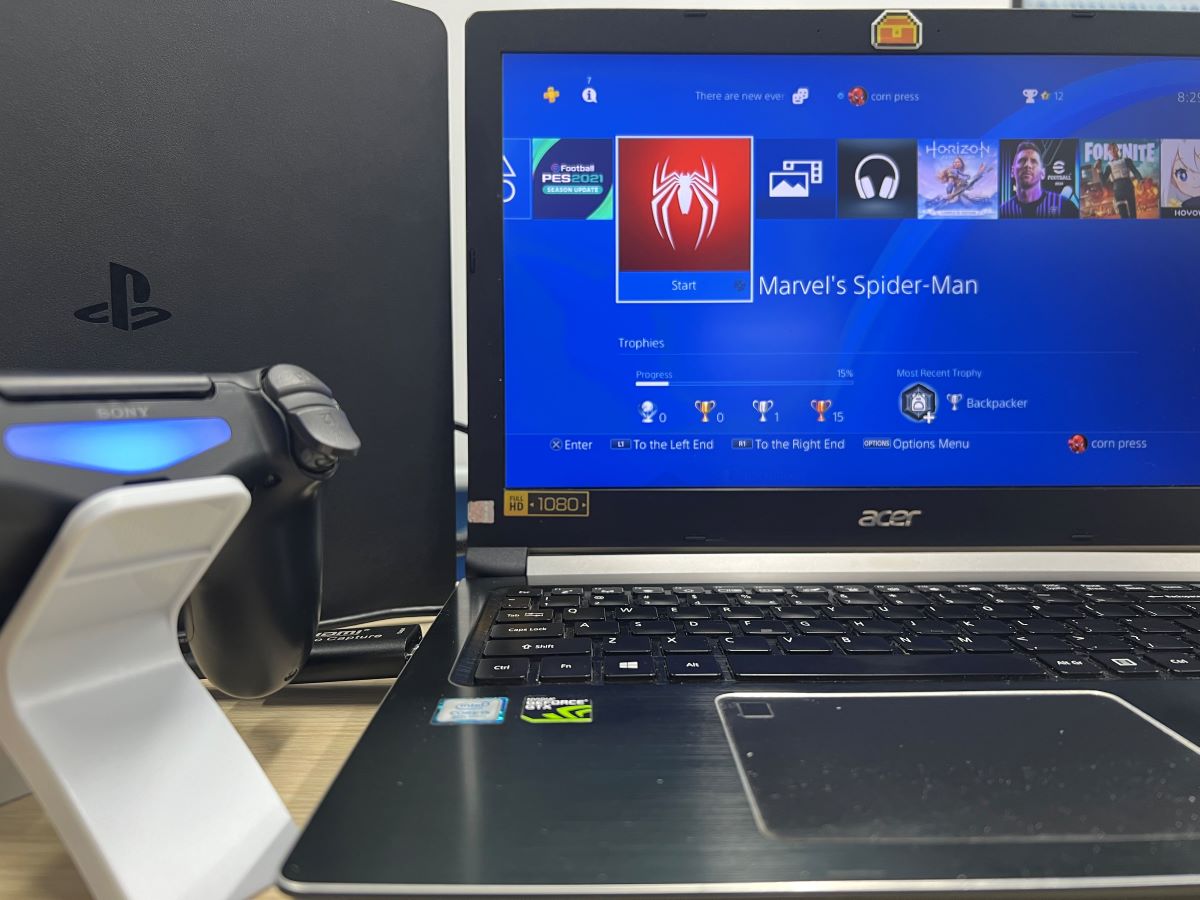
- To use a laptop’s HDMI port as an input, you need a capture card that converts external HDMI signals into a format the laptop can display.
- Connect the capture card to the laptop via USB, link the HDMI source to the capture card, and use OBS software to display the input on the laptop screen.
- For gaming, high-quality capture cards like Elgato models are recommended to avoid input lag and support HD and 4K recording at up to 60 fps.
In this article, I’ll show you how to use your laptop’s HDMI port as an input for gaming consoles and streaming devices.
You’ll learn how to connect a capture card to your laptop, enabling you to display external HDMI sources on your laptop screen.
This guide is ideal for anyone looking to enhance their gaming or streaming experience using their laptop as a monitor.
Keep reading!
Quick Navigation
How to Utilize a Capture Card with Your Laptop
An HDMI video capture card captures and records audiovisual signals from external HDMI source devices and then converts those signals into a format that the laptop can receive and display.
Video capture cards are especially popular among live-streamers and broadcasters, because they can record on-screen activity (gaming, meetings, sports, movie clips, etc) from any HDMI source and send it to a laptop.
You can display the digital video on your laptop screen directly, playback on a livestream, or save it to watch later.
Preparation:
- No products found.
- An HDMI source device (i.e., PlayStation 4)
- An HDMI cable
- Download and install OBS software.
Once you’ve got all the requirements ready, follow the steps below to use your laptop as a display device.
Step 1: Plug the USB side of the capture card into the USB port on your laptop.
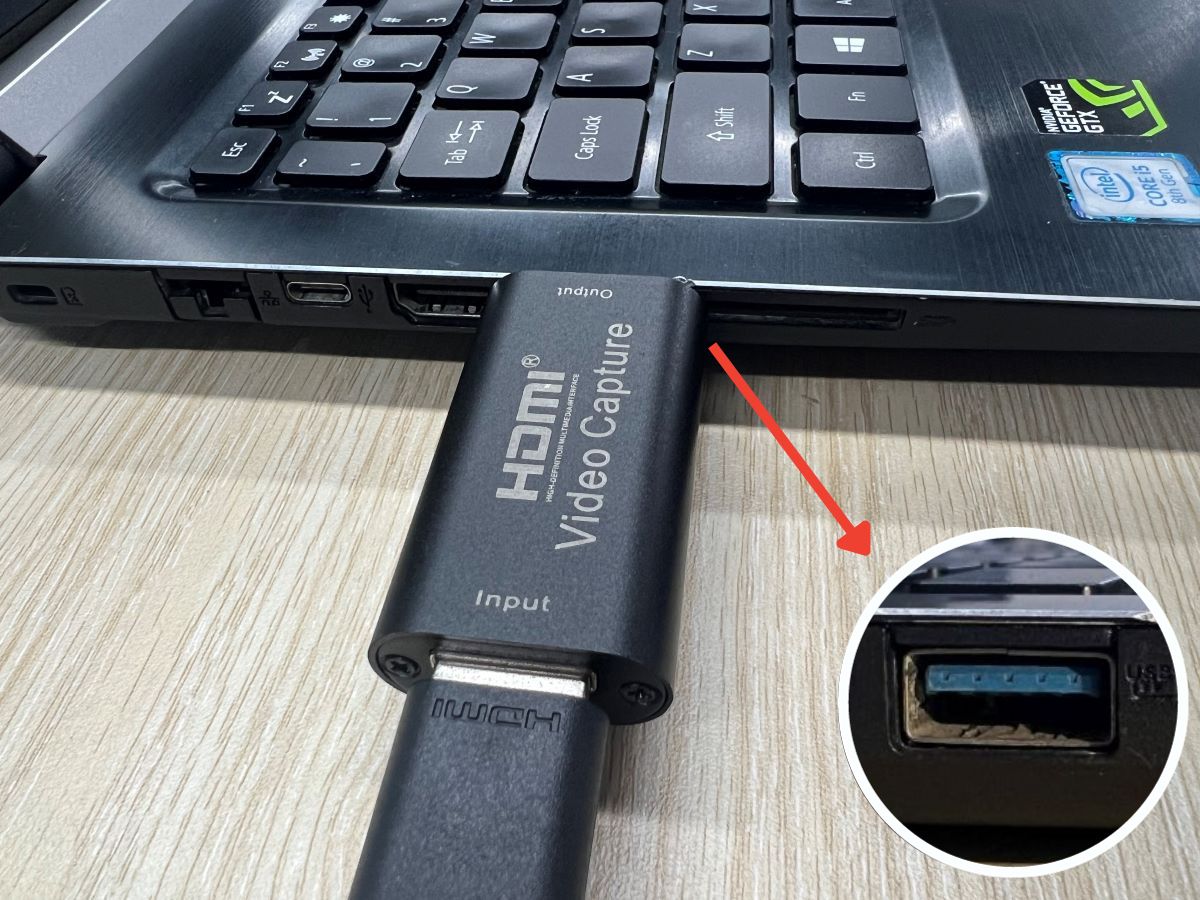
Step 2: Use an HDMI cable to connect your PlayStation to the HDMI port on your capture card.
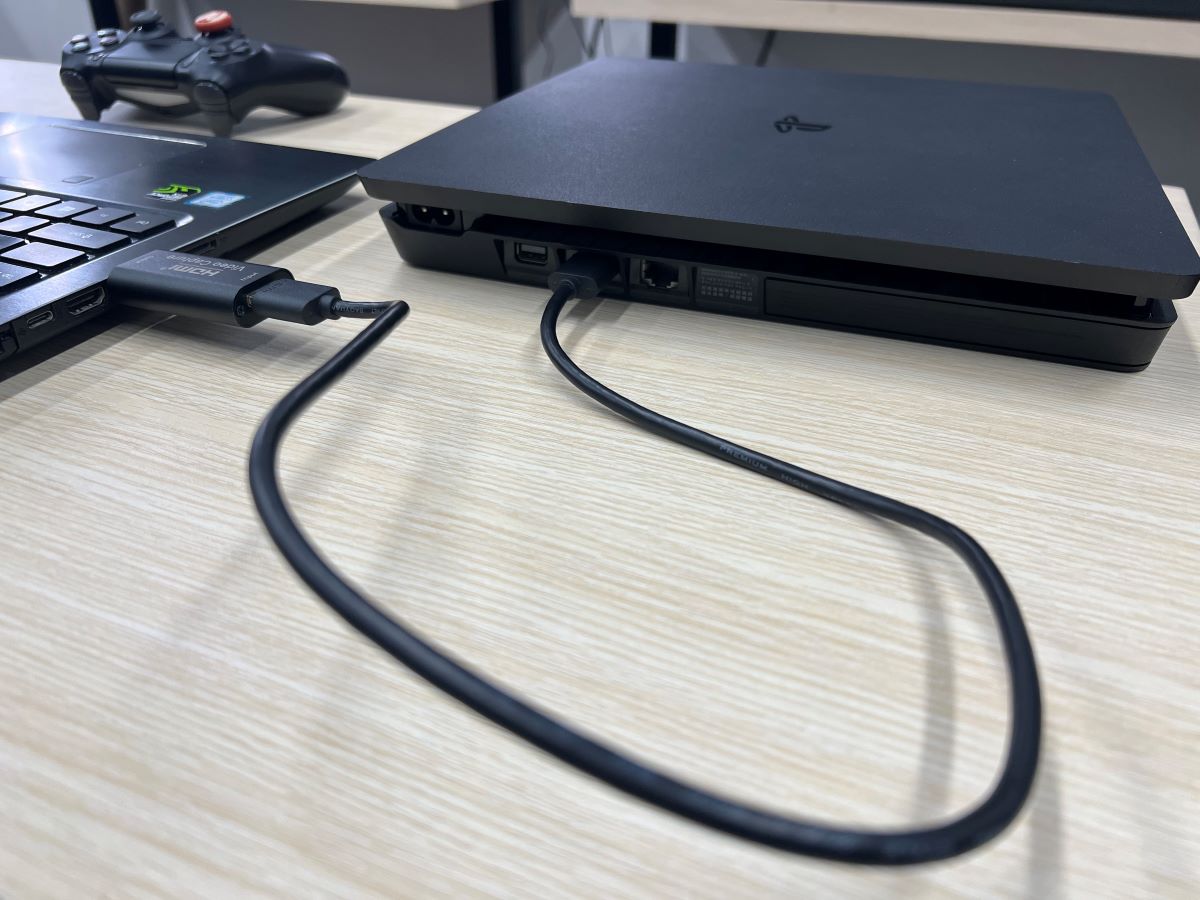
Step 3: Run the OBS Studio software on your laptop. The interface should look like the image below.

Step 4: Go to the Sources tab, right-click with your mouse and select Add → Video Capture Device.
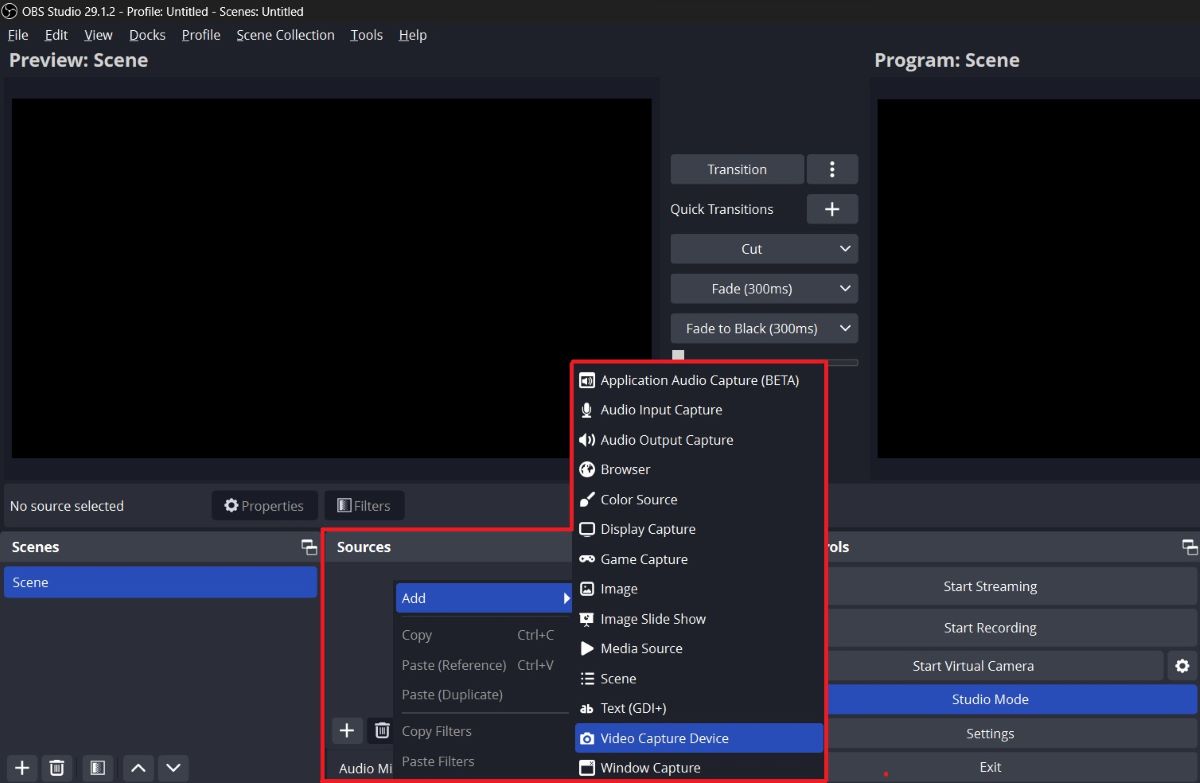
A dialog box will appear, allowing you to add your capture card and customize the name; you can leave it as the default if you prefer.
Click OK to create and select the source.
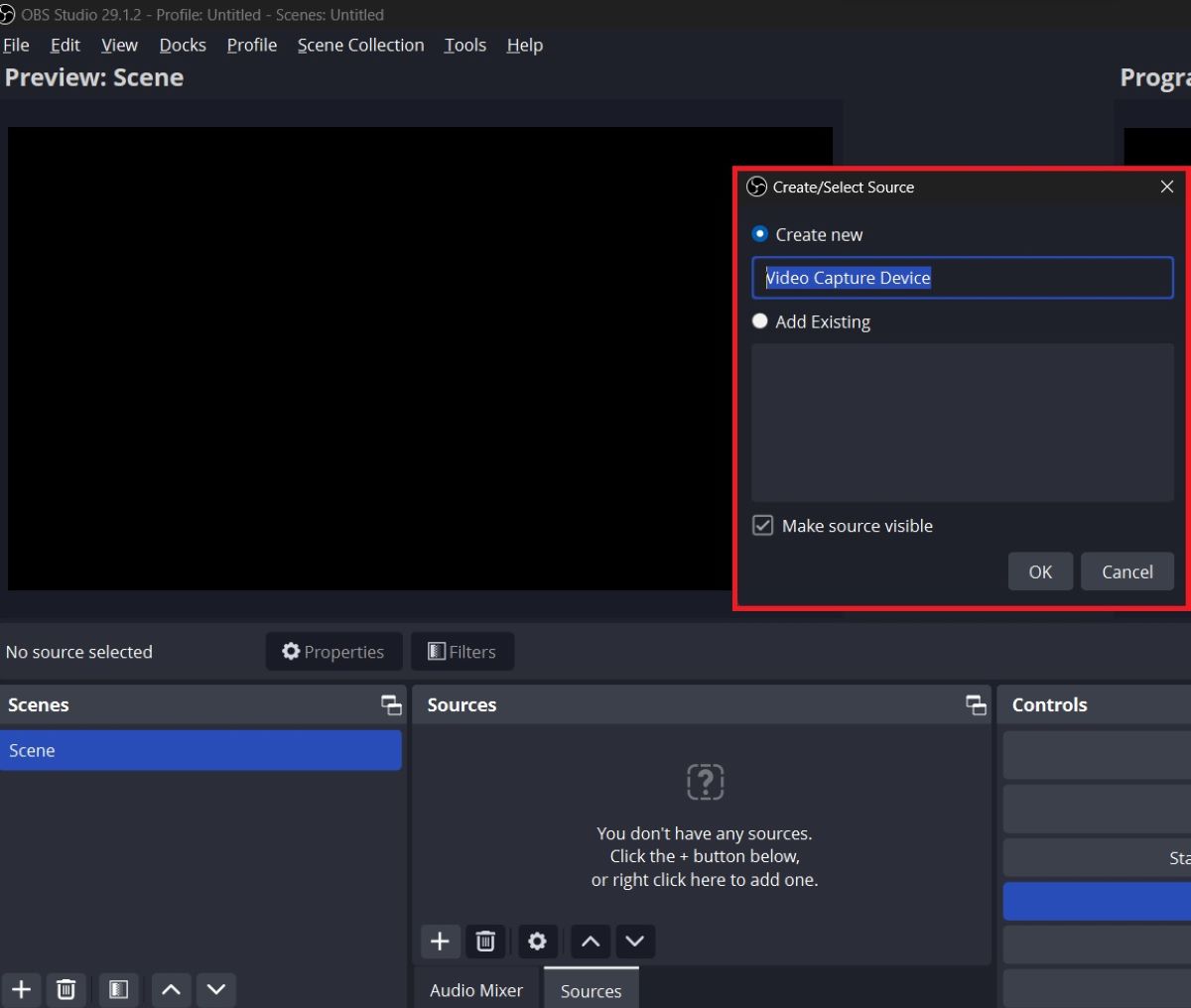
Step 5: Another dialog box will appear, showing the type of source device. Click the box and set the device type to ‘USB Video.’
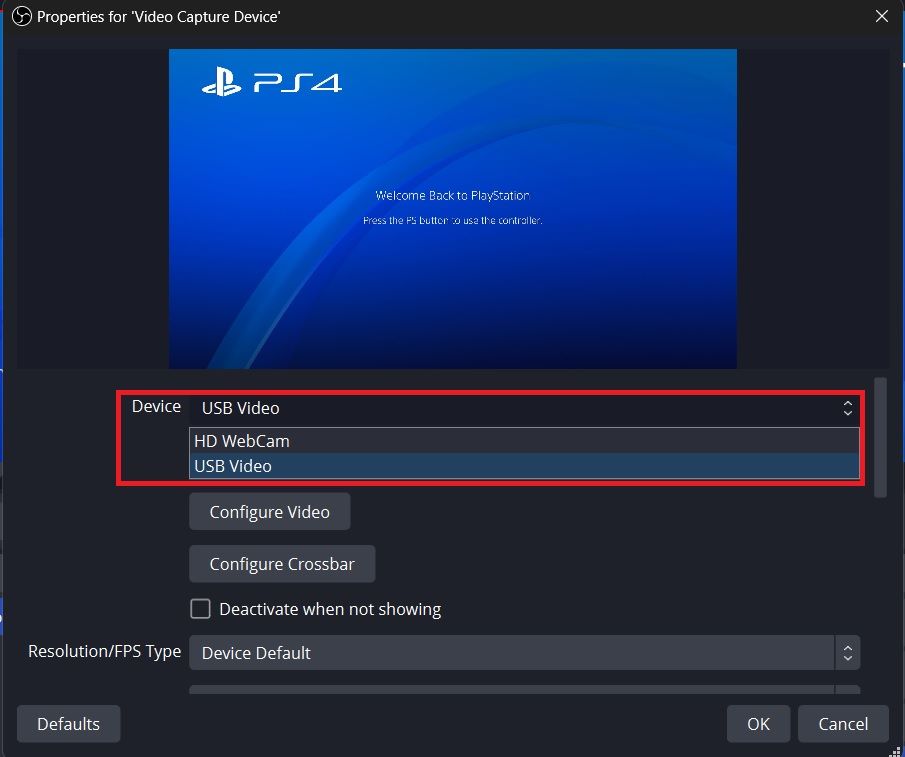
After completing the steps above, you can start using your laptop’s screen as a display for gaming consoles or streaming devices.
To maximize OBS, simply right-click on the screen and choose ‘Fullscreen Projector.’
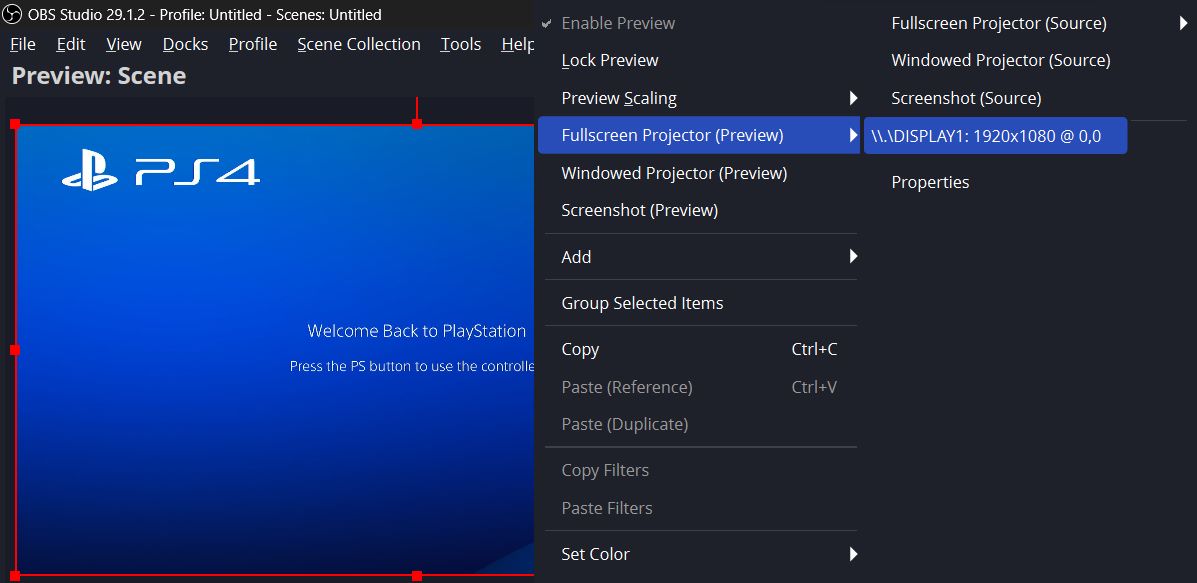
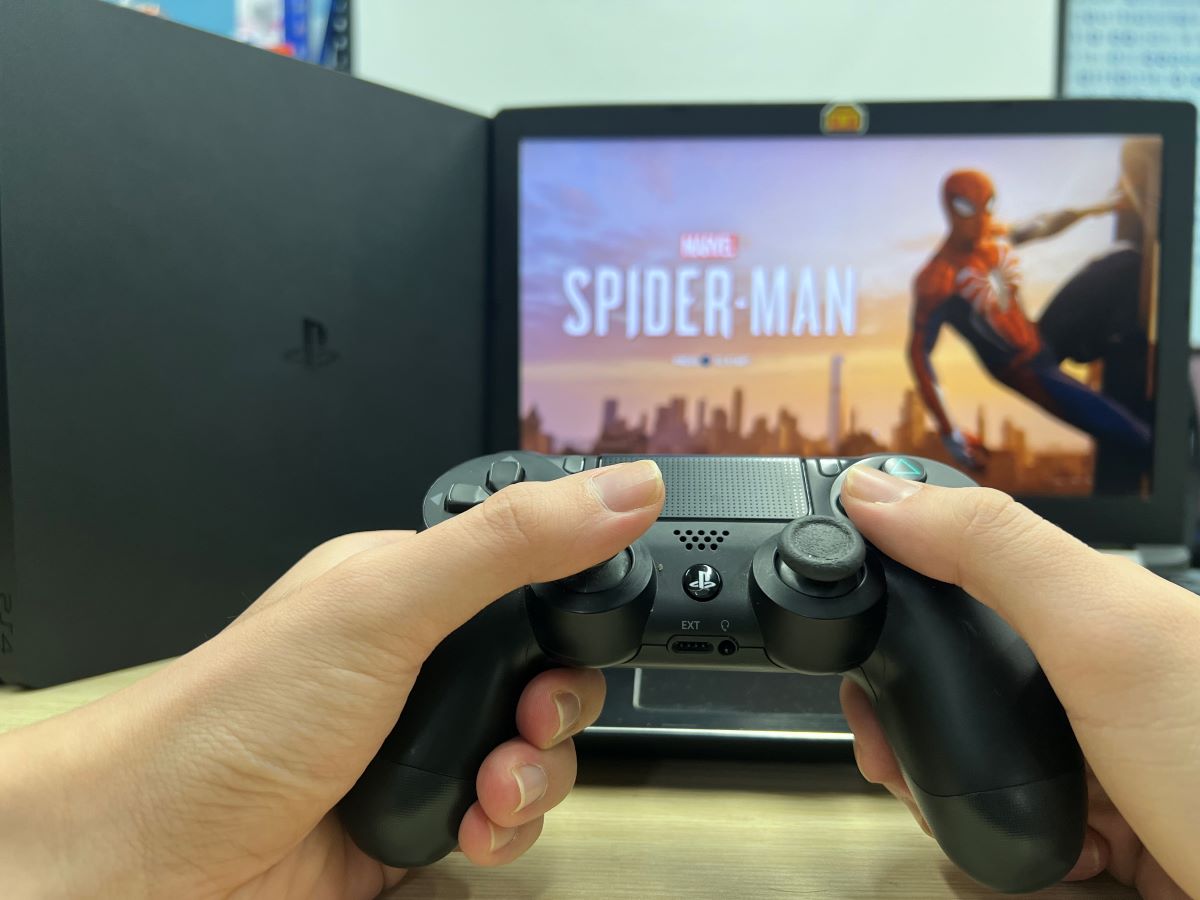
NOTE: If you’re a livestreamer and your HDMI source device doesn’t have a screen (i.e., gaming console or DVD player), I suggest that you use a capture card that also has an HDMI output. A good example is the Rybozen 4K AV Capture Card.
You can connect the HDMI output to your monitor or TV while gaming or streaming content. This way, you can have a separate, large-screen view, and the capture card’s potential output delay (lag) will not affect your gaming performance.
Higher-End Capture Cards You Might Want to Try
- 1080p60 Capture: share your gameplay in superb viewing quality.
- True Passthrough: play your console games with zero lag.
- Instant Gameview: power your workflow with ultra-low-latency technology.
(Paid Link.)
One thing to note about using a capture card is that the excellent capture cards do not come cheap.
The HDMI capture card I used in the demo (linked to in the preparation section) is a low-end capture card. If you use one like that for gaming, you will face issues with input lag and other performance flaws.
If you don’t care about gaming and only want to use your laptop as a display for Fire Stick, Apple TV, or other streaming devices, the one in the demo will serve you well.
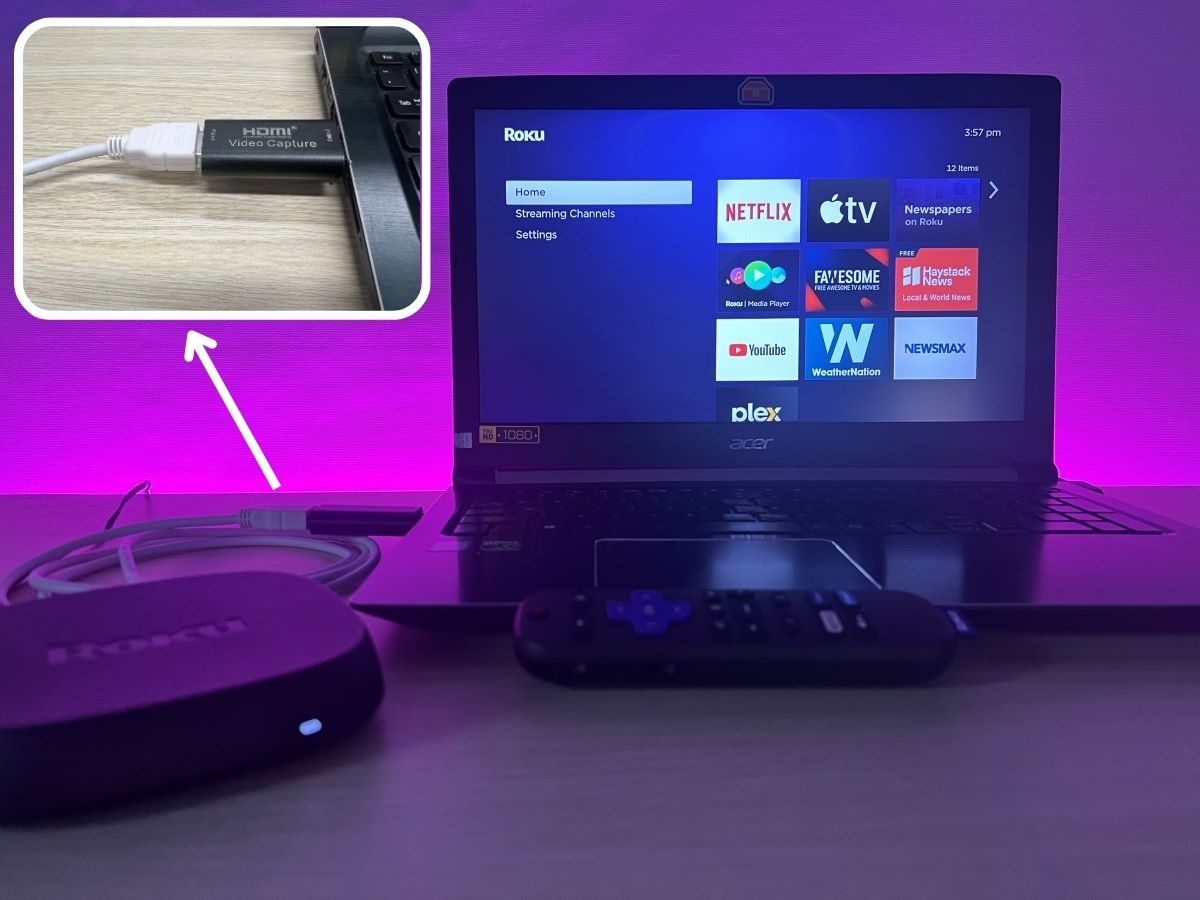
On the other hand, some high-end capture cards support high-quality (HD and 4K) recording at up to 60 fps, which is quite sufficient for console gaming.
If you’re considering higher-end capture cards, we recommend Elgato. They offer a selection of highly reviewed capture cards designed for gaming, all with the advantage of zero input lag thanks to their unique ultra-low latency technology.
|
Max resolution capture and frame rate |
1080p60 |
1080p60 |
2160p60 |
1440p60 |
|
HDR10 capture |
No |
Yes |
Yes |
Yes |
NOTE: While the Elgato HD60 S, HD60 S+, and HD60 X support sharing gameplay to PC and Mac, the Elgato 4K60 Pro is only compatible with PCs because its connection method is different from the others.
Instead of a USB interface, you connect the Elgato 4K60 Pro to your PC by inserting it into a PCIE slot on your motherboard.
Conclusion
Most laptops and their HDMI connectors cannot receive HDMI signals from external sources unless they get some help from a video capture card.
The video capture card connects to HDMI sources like a gaming console, streaming stick, or DVD player. It records the AV signals transmitted from the source and sends them to your laptop in digital video format.
If you’re new to capture cards, you may find them and their software a little complex to set up and customize. Follow our guide in the article to set up OBS Studio for your capture card and start displaying.
Gabriella ‘Diogo is a technical writer with a vested interest in tech hardware and equipment. She shares her knowledge and processes in an easy-to-grasp, lighthearted style. When she’s not testing or researching device performance, you’ll find her writing short stories or rewatching episodes of her favorite sitcoms.



